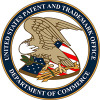 Comparative Analysis
Comparative Analysis
In the early development of electrolyzed water, electrolytic cells were only capable of generating small volumes of acidic electrolyzed water with a very limited shelf life. Because of a dramatic improvement in Clarentis’® electrolytic cell technology in 2009, Clarentis’s disinfectant Ultra-Lyte® can be produced as a stable, high-level disinfectant.
Ultra-Lyte® is less toxic, less volatile, easier to handle, compatible with other water treatment chemicals, effective against biofilm and generates no by-products compared to most other biocides.
Ultra-Lyte® is highly biocidal, but has a very low chemical load (measured in FAC) as compared to sodium hypochlorite, and is not harmful to the environment or humans.
Because Ultra-Lyte® effectively destroys microorganisms, they are presently not known to build up resistance to Ultra-Lyte® as they can to other sanitizers, cleaners and disinfectants. Standard toxic chemicals can create strains of pathogens that become resistant over time, because the cell can expel or neutralize the chemical before it can kill it, thereby causing the overall efficacy of chemical cleaners and disinfectants to be significantly reduced.
Ultra-Lyte® offers an environmentally sound alternative to chlorine and other oxidizing biocides. Ultra-Lyte® is proven to be more effective in killing bacteria, molds, other microbiological organisms and more effective in deactivating viruses than chlorine* alone.
Ultra-Lyte® is by chemical content nearly identical to the active components found in common chemical bactericidal agents. However, unlike the extremely toxic substances, such as chloramines, formaldehyde or iodine, the active components of Ultra-Lyte® are non-toxic, non-irritant, biologically harmless and ecologically safe. Because of its neutral pH, Ultra-Lyte® does not aggressively contribute to the corrosion of processing equipment or irritation of hands.
Ultra-Lyte® has a high Oxidation-Reduction Potential (ORP, expressed in millivolts). ORP correlates to the level of sanitizing ability of treated water irrespective of the kind of disinfectant used. For example, water which is treated to have an ORP of >500mV for approximately one hour would be assured of being free of E. coli, Listeria, Salmonella and other pathogens. The high ORP levels of >850 mV found in Ultra-Lyte® are possible due to the elimination of caustic chemicals. This feature of Ultra-Lyte® allows for a higher level of ORP than disinfectants such as Sodium Hypochlorite (NaOCl). When caustic Sodium Hypochlorite is used, it raises the pH of water and thereby dramatically reduces its efficacy (ORP). When Ultra-Lyte® is used, the pH of water is not raised, but is slightly lowered, and its ORP remains stable or is enhanced.
Electrochemically synthesized reagents, such as Ultra-Lyte®, are gaining rapid popularity in a number of applications. Not only does this technology offer a cost-effective alternative to existing technologies, but it is also contributing to the protection of the environment.
All water disinfection will result in the formation of disinfection by-products. Ultra-Lyte® is no exception, but has the advantage that it does not contain the hydroxyl ion and will oxidize organic material to form lower levels of chlorates, thus reducing halogenated by-products. The inorganic by-products, (trihalomethanes, THMs, chlorite, chlorate and chloride ions) formed when Ultra-Lyte® is used are held in balance at much lower levels. Thus, lower disinfection by-products are produced in the process, at a level of about 30% - 50% when compared with sodium hypochlorite and other oxidants.
Chlorine
Chlorine is currently the most widely-used oxidizing biocide. It is a powerful oxidant and is used in bleaching and disinfectants.
The use of chlorine as a micro-biocide and water disinfectant is declining because of safety, environmental and community impact considerations. According to the MSDS for chlorine, this chemical is highly toxic, corrosive, and may be fatal if inhaled. It is considered to be a marine pollutant, and in the upper atmosphere, chlorine atoms have been implicated in destruction of the ozone layer. An environmentally sound alternative to chlorine and other oxidizing biocides is needed.
Various alternatives to chlorine use have been explored, including bleach, bleach with bromide, non-oxidizing biocides, ozone, ultraviolet, chlorine dioxide, sodium chlorite, chloramines (chlorine & ammonia), copper-silver ionization, and thermal disinfection. Alternative devices include chlorinators, electrically generated ozonators, and copper/silver cathodes which use electrical activity to cause the release of silver and copper ions into drinking water. Each chemical and device offers some unique advantages, but each has distinct disadvantages.
The HOCl in Ultra-Lyte® is found to have the advantages of other biocidal alternates without their disadvantages. Categories of objective analysis include: efficacy, safety, taste and odors, impact on equipment and systems (corrosion), effect on scale, biofilm, residual effects, ease of use, maintenance and cost.
Although Ultra-Lyte® is measured and dosed as free available chlorine, it exhibits behavioral traits associated with more active chlor-oxygen chemistry than traditional chlorine. In contrast to other chlorine technologies, oxidants such as Ultra-Lyte™ offer superior disinfection efficacy, elimination of biofilm, more durable chlorine residual levels, and reduced formation of disinfection by-products. Ultra-Lyte® readily oxidizes ammonia, sulfides, iron and manganese, and can cause a micro flocculation effect (reduction in turbidity) in pretreatment. Even at residual levels as high as 10 ppm, Ultra-Lyte® leaves minimal to no odor or chlorine taste in treated water.
Production of Ultra-Lyte® is similar to the process of fabricating standard sodium hypochlorite (NaOCl), with one significant difference. Sodium hypochlorite combines Cl2 with caustic soda (lye) to stabilize chlorine. The manufacturing process of Ultra-Lyte® eliminates the use of caustic soda by using high rejection membrane technology to produce pure HOCl. With the sodium removed, the benefits of HOCl become immediately evident when used as a biocide. Elimination of lye makes disinfection possible without the high pH elements associated with sodium hypochlorite. Ultra-Lyte® is produced close to a pH of 6.5, thereby delivering high efficacy in short contact times without the use of caustics. The human body pH level is approximately 7.3, therefore Ultra-Lyte® falls within the range where it is safe to the human body.
Independent research has confirmed that the effectiveness of Ultra-Lyte® on reducing total microbial counts is superior to that of sodium hypochlorite. The biocidal activity of HOCl generated by the new Ultra-Lyte® System is up to 100 times more active than the sodium hypochlorite generated by earlier systems. Sodium hypochlorite or gaseous chlorine at the same concentration as the concentration found in Ultra-Lyte®, leads to slower microbial kill and more corrosion when tested following ASTM guidelines.
Activated solutions such as Ultra-Lyte® have been conclusively shown to exceed chemically-derived equivalents both in low dosage effectiveness as well as physiochemical purity. This heightened biocidal capacity relative to traditional chemical solutions permits the use of Ultra-Lyte® at lower dose rates, decreasing the risk of adverse environmental impact.
